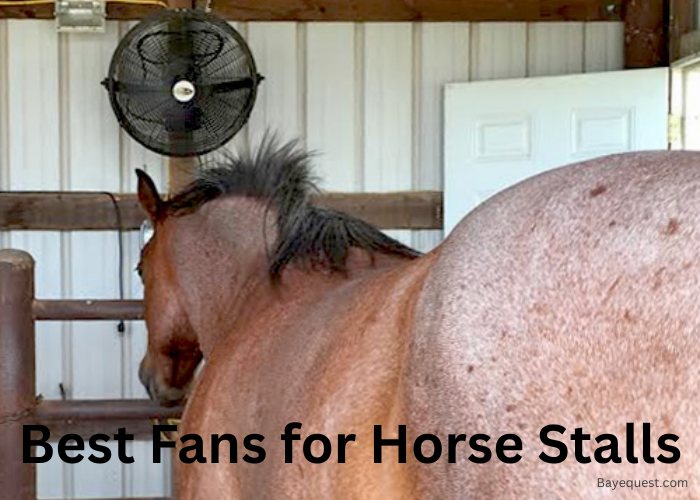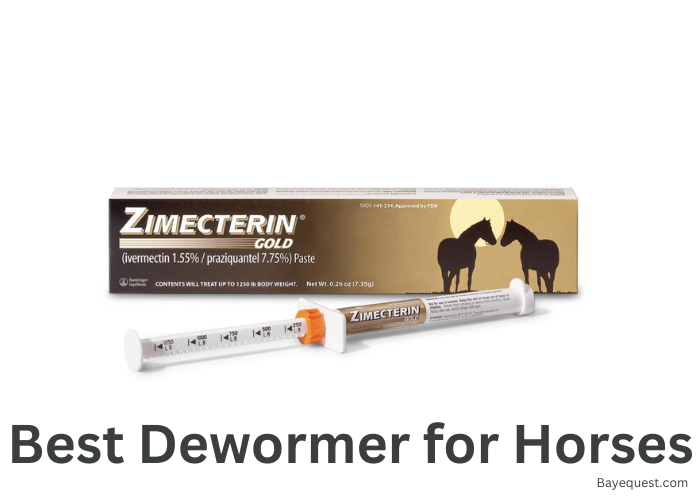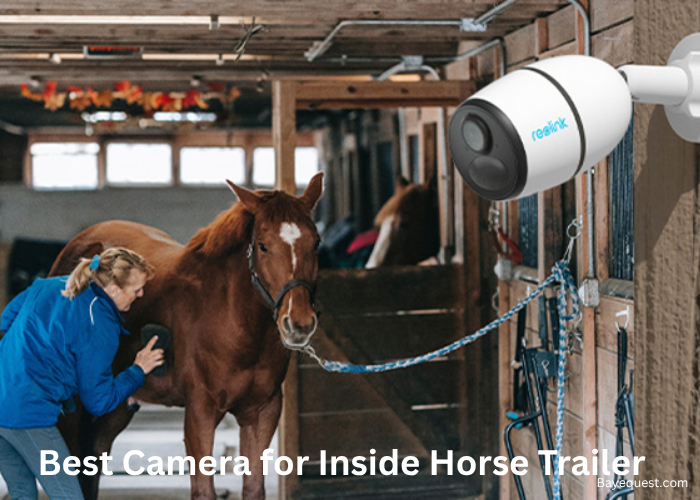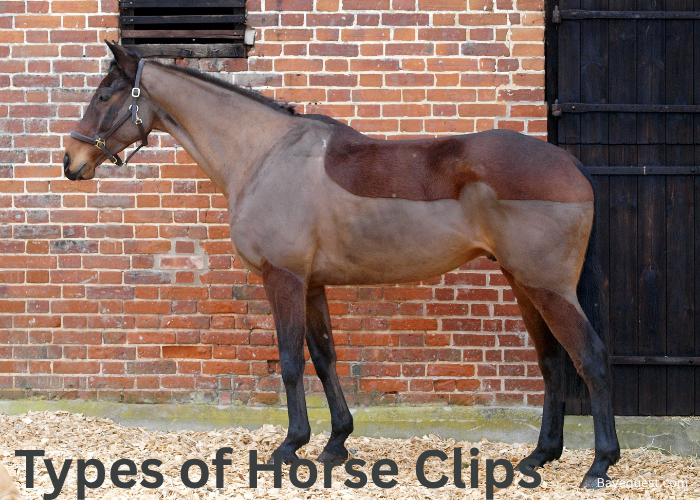Out in the wild, horses roam free. They gallop across rocky terrain, climb hills, and wade through streams.
But have you ever thought about their hooves? Without a farrier in sight, how do these untamed beauties keep their hooves in shape?
Nature, as it turns out, has its way of hoof care. The daily grind of moving across different surfaces naturally trims their hooves.
It’s like getting a manicure from Mother Nature herself. Let’s dive into the clever ways wild horses keep their feet in tip-top condition.
How Do Wild Horses Trim Their Hooves? Key Takeaway
Wild horses maintain their hooves through natural wear as they move across varied, rough terrains. Covering long distances daily, their hooves are naturally filed down. Digging and scratching add to this natural trimming process. Seasonal changes and herd dynamics also influence hoof growth and wear, helping to keep their hooves healthy and strong.
Do Wild Horses Need Their Hooves Trimmed?
Wild horses do not need their hooves trimmed because they naturally wear them down by moving across rough and varied terrains daily. This constant movement keeps their hooves from overgrowing and helps maintain a balanced shape.
Unlike domesticated horses, wild horses have a natural hoof care process driven by their environment and lifestyle.
How Do Wild Horses Trim Their Hooves?
Wild horses maintain their hooves through several mechanisms. These mechanisms are primarily driven by their lifestyle and environment.
Here are the ways through which wild horses keep their hooves in good shape:
Natural wear and tear. As wild horses roam over varied terrains, their hooves undergo natural abrasion. This constant movement across different types of ground acts as a natural file.
Varied terrains. The diversity of landscapes that wild horses traverse plays a crucial role. Hard, abrasive surfaces help file down the hoof more effectively than softer grounds. This natural filing prevents overgrowth, splits, and other hoof problems.
Long distances. Wild horses cover significant distances daily in search of food, water, and shelter. This constant motion not only aids in physical conditioning but also ensures continuous trimming of the hooves.
Digging and scratching. Occasionally, wild horses might dig into the ground for water or minerals or scratch their hooves against hard objects. This also helps to naturally wear down their hooves.
Seasonal changes. Seasonal variations also affect wild horses hoof growth. For example, hooves tend to grow faster in wetter conditions and slower in dry conditions. Wild horses adapt to these changes through their movement patterns and by accessing different terrains.
Herd dynamics. The dynamics within a herd can also influence movement patterns, where dominant and submissive behaviors can increase activity levels, thus promoting more hoof wear.
Understanding Hoof Growth and Health in Horses
Understanding horse hoof growth and health is crucial for keeping these animals agile and pain-free.
A horse’s hoof is structured like a cone, made up of several layers. The outer layer is hard and protects the inner tissues and bone, all supported by a cushioning pad.
Hooves constantly grow, much like human fingernails, usually about a quarter inch per month. This growth rate can vary with the horse’s diet, age, and environment.
Hooves are vital not just for walking, but also for blood circulation in the legs with each step. Healthy hooves are central to a horse’s overall well-being.
Common issues like cracks, splits, and infections can occur, especially without proper care. Regular check-ups, trimming, and cleaning are essential. They help prevent most hoof problems and keep the horse mobile and healthy.
The Natural Balance of Equine Hooves
The natural balance of equine hooves is all about keeping the hoof in alignment with the horse’s structure and movement needs.
When a horse’s hooves are balanced, each part works together to support smooth, pain-free motion. This balance is important because it prevents uneven wear and tear that can lead to discomfort or injury.
In the wild, horses maintain this balance naturally by moving over various terrains. This constant movement helps to wear down the hoof evenly.
For domestic horses, achieving this balance involves regular trimming and care from a farrier.
A well-balanced hoof allows for proper weight distribution and shock absorption. This balance also supports the internal structures of the hoof, promoting good circulation.
Keeping a horse’s hooves in natural balance helps them move freely and comfortably, which is key for a happy, active horse.
The Impact of Diet on Hoof Health
The diet of a horse plays a huge role in the health of its hooves. Just like how eating well can make our own nails strong and healthy, a good diet keeps a horse’s hooves in top shape. A balanced diet rich in specific nutrients is key.
First, horses need plenty of biotin. Biotin is a type of B vitamin that strengthens hooves.
Along with biotin, they also need enough amino acids, which are the building blocks of protein. These help the hoof grow strong and resilient.
Minerals are another important part of the equation. Zinc and copper, for example, help develop and maintain healthy hooves.
Also, remember calcium and phosphorus. They work together to keep the hoof wall tough and less likely to crack.
For horses, eating a mix of quality forage, supplemented with the right minerals and vitamins, is the best way to ensure their hooves stay healthy. If a horse isn’t getting what it needs from its diet, its hooves can become weak, brittle, and prone to problems.
Lifestyle Differences Between Domestic and Wild Horses
When it comes to hooves, the lives of domestic and wild horses are quite different. Wild horses roam free, and this lifestyle naturally keeps their hooves in good shape.
They travel over a variety of terrains, from rocky ground to softer earth, which files down their hooves. This constant movement helps prevent overgrowth and maintains a natural balance in their hoof structure.
Conversely, domestic horses lead a more controlled life. They live in stables and paddocks, where the ground is softer and doesn’t wear down their hooves.
Because of this, domestic horses need regular care from a farrier. The farrier trims and shapes their hooves to prevent overgrowth and other problems like cracking or splitting.
Moreover, domestic horses might not move as much as wild horses. This limited movement can slow down the natural trimming process of the hooves.
So, regular exercise is crucial for maintaining hoof health in domestic horses. This difference in activity levels is a big reason why domestic horses need more human intervention.
Evolution’s Role in Hoof Maintenance
Evolution plays a big role in how wild horses maintain their hooves. Over thousands of years, wild horses have adapted to survive in tough environments, and their hooves are a key part of this survival. They’ve evolved to be tough and durable, able to withstand rough terrain.
In the wild, horses are always on the move, searching for food and water. This constant travel over varied surfaces wears down their hooves. This means they don’t grow too long or get out of shape, which could cause pain or injury.
This natural wear also keeps the hooves balanced, promoting good health and mobility. It’s a self-maintaining system that has developed over countless generations.
Wild horses don’t need humans to trim their hooves or fix their problems. Instead, their lifestyle and the natural world around them do the job.
So, evolution has equipped wild horses with hooves that suit their needs, requiring minimal care. This is a stark contrast to domestic horses, who often need regular hoof care from humans to stay healthy and comfortable.
Why Wild Horses Don’t Need Shoes
Wild horses don’t need shoes, and there’s a good reason for that.
They live in environments that naturally keep their hooves healthy and strong. These horses spend their days walking and running over various surfaces.
This constant movement across different terrains acts like a natural file, keeping their hooves trimmed and in good shape.
Wild horses have adapted over thousands of years to handle their natural environment without any need for human-made shoes. Their hooves are tough enough to handle the ground they live on.
Plus, being constantly on the move helps their hooves stay naturally trimmed. This way, their hooves are always ready for the rough terrain without any extra help.
Interesting read: How Long Can Horses Gallop?
Why Domestic Horses Need Shoes
Domestic horses often need shoes, and here’s why.
Domestic horses live in environments that are much different from the natural terrains.
They walk on harder, more abrasive surfaces like concrete or gravel, which can wear down their hooves faster than softer, natural ground.
Shoes protect horses’ hooves from these harsh surfaces. They act like a barrier, preventing excessive wear and helping to avoid injuries like cracks or splits in the hoof.
Shoes also give domestic horses better traction, especially when they’re working or performing. This extra grip can prevent slipping and accidents, keeping both the horse and its rider safe.
Additionally, because domestic horses might not move around as much as wild horses, their hooves don’t naturally wear down in a balanced way. Shoes help ensure that their hooves wear evenly.
In summary, shoes are a practical solution for domestic horses. They help adapt the horse’s natural hoof to less natural environments, ensuring they stay healthy and perform their best.
Related read: How Often Do Horses Need to be Shoes?
Implications for Domestic Horse Hoof Care
Caring for the hooves of domestic horses is crucial because their living conditions are quite different from those of wild horses. Here’s what that involves:
First, regular trimming is key. Domestic horses aren’t roaming over various terrains that keep their hooves in check. So, a farrier must trim their hooves every six to eight weeks to prevent overgrowth and uneven wear.
Shoeing is another important aspect, especially for horses that work or perform. Shoes protect their hooves from the hard, unnatural surfaces they often walk on, like paved roads or rocky paths. This protection helps prevent injuries and provides better traction.
Also, monitoring for hoof problems is essential. Conditions like cracks, splits, or infections can develop if hooves are neglected. Early detection and treatment can prevent minor issues from becoming major problems.
Lastly, diet plays a role too. Domestic horses need a well-balanced diet with nutrients that promote strong, healthy hoof growth. Supplements might be necessary if their regular feed doesn’t cover all their nutritional needs.
In summary, taking care of a domestic horse’s hooves involves regular maintenance, protection through shoeing, vigilance for health issues, and proper nutrition. This approach helps ensure that these horses hoofs remain healthy.
Does a Hoof Trim Hurt the Horse?
A hoof trim doesn’t hurt the horse when it’s done right. Think of it like trimming your nails.
Just as you don’t feel pain when you cut your nails properly, a horse doesn’t feel pain when its hooves are trimmed. That’s because the parts of the hoof that get trimmed—mainly the outer part and the bottom—are like our nails, without nerves.
However, the key is making sure the trimming is done correctly. If the trim is too deep or if it cuts into the sensitive parts of the hoof, then it can cause discomfort or even pain for the horse.
That’s why it needs to be done by a skilled farrier. They know how to trim just the right amount and keep the horse comfortable.
So, in general, a regular trim is a pain-free routine that keeps the horse’s hooves healthy and the horse happy to move around.
How to Trim a Horse’s Hoof
Trimming a horse’s hoof is a careful process that keeps the horse comfortable and mobile. Here’s how it’s done:
Prepare the horse. First, make sure the horse is calm and secure. The horse needs to be relaxed, so take your time to get it comfortable with your presence and the tools you’ll use.
Clean the hoof. Start by cleaning out the hoof with a hoof pick. Remove any mud, stones, or debris from the sole and the crevices around the frog, which is the V-shaped part in the middle of the hoof.
Inspect the hoof. Look for any signs of problems, such as cracks, thrush, or loose shoes if the horse is shod. It is important to address these issues first.
Start trimming. Using hoof nippers, trim the excess hoof wall. You want to make the wall even with the sole of the hoof. Avoid cutting too deep—just enough to remove the overgrown part.
Shape the hoof. After the excess wall is trimmed, use a rasp (a sort of large file) to smooth and shape the edges. This helps prevent the hoof from chipping and makes it comfortable for the horse to walk on.
Check your work. Throughout the process, frequently check that the hoof is level and balanced. A good way to do this is to set the hoof down and see if the horse stands comfortably. Make adjustments as needed.
Finish up. Once you’re satisfied with the trim, give the hoof another once-over to ensure there are no sharp edges or uneven spots.
What Happens if Horse Hoofs Are Not Trimmed?
If horse hooves aren’t trimmed regularly, a few problems can start to crop up.
First, the hooves can grow too long and start to curl over, making it hard for the horse to walk properly. This can lead to an awkward gait, which isn’t just uncomfortable for the horse; it can also cause serious issues in their legs and back.
Second, overgrown hooves are more likely to split or crack. These cracks can be painful and might lead to infections if dirt gets trapped in them. In severe cases, these infections can reach the deeper, sensitive parts of the hoof.
Lastly, when hooves aren’t trimmed, they can become unbalanced. An unbalanced hoof makes a horse distribute its weight unevenly.
Over time, this can strain certain muscles and joints, leading to discomfort and long-term damage.
So, regular hoof trimming isn’t just about keeping the hooves looking good. It’s essential for the horse’s overall health and well-being.
Interesting read: How to Care for Baby Horse Hooves.
How Often Should My Horse See the Farrier?
Horses should see the farrier every 4 to 8 weeks, depending on their hoof growth, activity level, and environment. Regular visits help prevent hoof problems like cracks or imbalances.
Some horses may need more frequent trims, while others may go longer. Consult your farrier to determine the best schedule for your horse’s specific needs.
FAQs
Do horse shoes hurt?
No, horse shoes don’t hurt when they’re fitted properly. Think of them like the shoes we wear. If they fit well, they’re comfortable and can even protect our feet from getting hurt. It’s the same for horses. However, if the shoes don’t fit right, or if they’re not attached properly, they can cause problems. They might pinch the horse or make it hard for them to walk, much like how uncomfortable it is for us to walk in shoes that don’t fit.
Are wild horses’ hooves healthier than those of domestic horses?
Yes, wild horses’ hooves are healthier than those of domestic horses. This is mainly due to their lifestyle, which includes constant movement over varied and often rough terrains. This natural activity helps keep their hooves naturally trimmed and in better condition.
Does the diet of wild horses affect their hoof health?
Yes, the diet of wild horses affects their hoof health. Wild horses eat a more varied and fibrous diet than domestic horses. This diet is high in nutrients that are essential for maintaining strong and healthy hooves, such as biotin, zinc, and copper. The natural foraging behavior of wild horses also means their diet is naturally balanced.
See also: What do Wild Horses Eat?
Conclusion
As we’ve seen, wild horses have a remarkable system for keeping their hooves in tip-top shape, naturally. They don’t need hoof picks, nippers, or farriers.
Their secret? Just the great outdoors. By living a life on the move across a variety of terrains, these horses manage something quite special.
They turn every step into a chance for maintenance. It’s a testament to the power of nature and the resilience of these magnificent creatures.
So next time you see a horse in the wild, remember, they’re not just roaming—they’re grooming. And that’s nature’s beauty at its best, effortless and perfectly designed.








